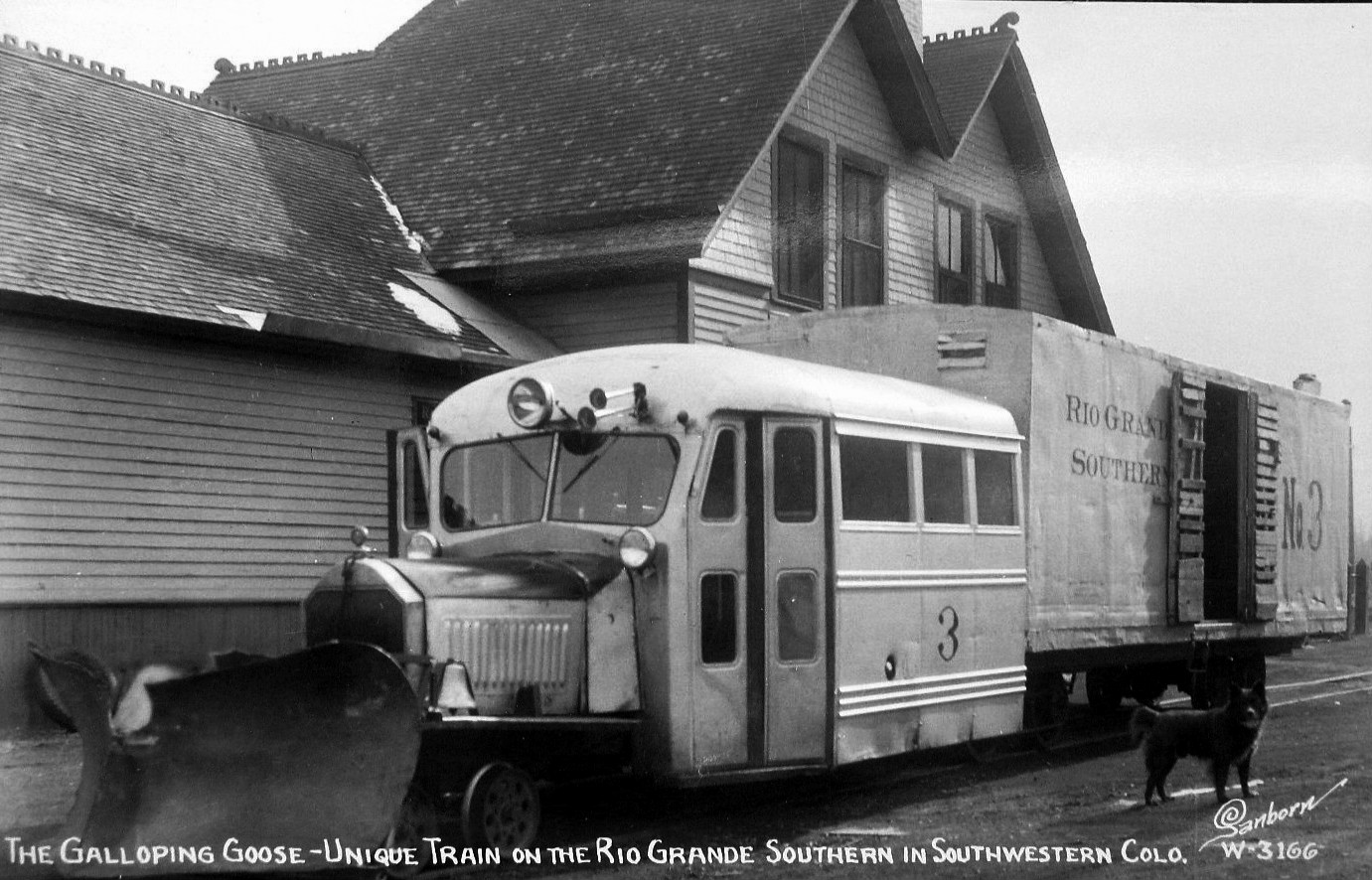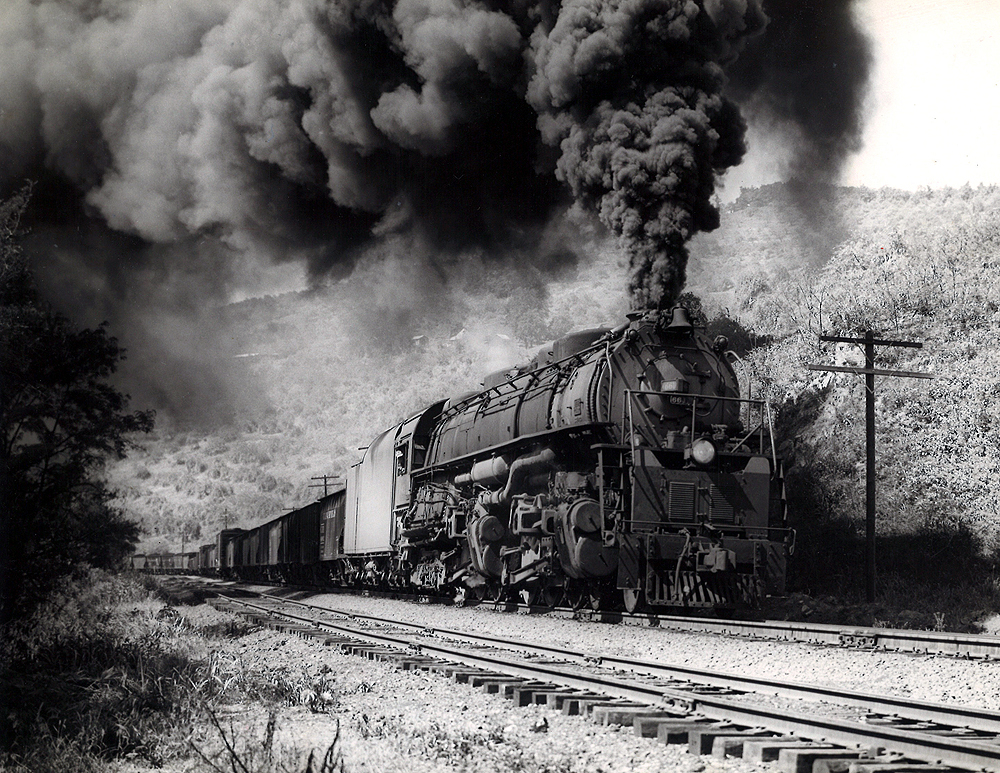The Rio Grande Southern was the sick man of Colorado. It started out plenty hopeful, but shortly into it's life it was crippled by the Panic of 1893 and never truly recovered.
The Rio Grande Southern, referred to locally as just "The Southern" ran from the Durango to Ridgway through the delightfully named Lizard Head Pass. It was built by Russian immigrant and Colorado toll road builder Otto Mear, the famed "Pathfinder of the San Juans", with the intent to transport immense amounts of silver mineral traffic that were being produced by the mining communities of Rico and Telluride.

The Denver & Rio Grande (which became the Denver & Rio Grande Western when it absorbed the Rio Grande Western) had built their narrow-gauge route from Denver in 1870, made its way to the Animas Valley from Alamosa and established the city of Durango in 1881, and then continued on to the town of Silverton in 1882. The D&RG would later build a route from Salida to Montrose, and then south to where they established the town of Ridgway (named after D&RG superintendent Robert M. Ridgway) and reached the mining town of Ouray in 1887. The D&RG had surveyed possible routes to access the town of Rico and connect the Ouray branch: one that branched off of the Silverton Branch at Hermosa and another route that Otto Mears' short-lived Silverton would eventually be constructed on. But as far as the D&RG was concerned, Red Mountain Pass was impenetrable by rail. It was Otto Mears who decided to take on the task of connecting the D&RG's rail lines that were separated north and south of the central San Juans. Mears had been on good terms with the D&RG from building the roadbed for their route to Gunnison over Guncha and Marshall Pass.
Mears' first attempt at doing just that was the Silverton Railroad, which went northwest of Silverton utilizing the survey done by the D&RG, mostly following the route of today's US 550 (also known as the Million Dollar Highway) over Red Mountain Pass. Mears managed to build the Silverton Railroad to Ironton, which made it within 8 miles of Ouray. However, the remaining stretch through the Uncompaghre Gorge to Ouray was considered too difficult, despite the efforts and engineering feats that had been already accomplished by Mears, such as the Chattanooga Loop, the Red Mountain Wye and the Corkscrew Gulch turntable/switchback, to get the Silverton Railroad to Ironton in the first place. An electrificed cog railway with a 7% grade was briefly considered, as well as a spiraling tunnel, but the two ideas never made it out of the hypothetical realm. The Silverton Railroad was able to profit from the also immense mineral traffic generating from the Red Mountain Mining District, but Meers was not happy about failing to reach his objective.

Once it was apparent to Mears that the Silverton Railroad wouldn't be able to access Ouray, he considered a railroad route heading west of Durango. It would head north following Lost Creek and the Dolores River, accessing the mining community of Rico, then over Lizard Head Pass, following the San Miguel River up to the Dallas Divide, and then into the town of Ridgway. This route would essentially bypass the issues that kept the Silverton Railroad from completing the line from Ouray and the need for various switchbacks and wyes that had been required to traverse Red Mountain Pass. In 1889, he incorporated the Rio Grande Southern, the third of his railroads, alongside the Silverton Railroad and the Silverton Northern Railroad. Construction began that year from both ends of the railroad at Ridgway and Durango. By the end of 1890, before the line was complete, the RGS was already servicing mining companies in Telluride and west of Durango. The line was completed on 12 December 1891, where the two construction teams met south of Rico.
Fully open for business, the RGS was booming. It almost immediately paid off it's construction costs and was wildly profitable for the company and investors, as well as offering higher than the average pay for RGS employees. The RGS's opening was also a boon for the Denver & Rio Grande, since there was now a rail connection between Ouray and Silverton, although one couldn't call it a direct connection. Despite being only a dozen or so miles apart by air, the two towns were hundreds of miles apart by rail, even using the RGS around the west side of the San Juans.
Then, the Panic of 1893 struck. While there are believed to be numerous causes of the financial crash, in Colorado it was tied to the abrupt collapse of the silver industry after two decades of explosive growth. The Panic rattled apart Otto Mears' growing narrow gauge empire, damaging the finances to an extent that the Rio Grand Southern, the Silverton, and the Silverton Northern never truly recovered from. Mears filed for voluntary receivership of the RGS, and the Denver & Rio Grande stepped in and took control of the RGS. Now they had the connection between Ouray and Silverton that they had wanted but hadn't thought possible, and they hadn't even had to construct it. By 1895 the receivership had ended, but Edward Jeffery, president of the D&RG, was appointed president of the RGS as well, still ensuring the D&RG's control of the line.
The RGS went through rugged terrain and fought pitched battles with Mother Nature, making it an expensive railroad to operate. The railroad's route followed the Dolores River, which tended to flood many times during the railroad's lifetime. Many bridges and trestles would be washed out when rivers flooded over, adding more unnecessary costs to railroad maintenance and closures, and rock slides and mud slides were a constant menace. Most of the terrain it went through experienced tons of snow in winter and occasional rock and mudslides in summer. The RGS was able to order two new rotary snow plows before the Panic of 1893 and later on built three flangers, but depending on how bad the snow got, it often caused closures, and the cost to operate trains with their plow equipment was too much for the railroad during specific times as they required two to four locomotives to push them.
The still-ailing RGS was hit hard again during the Great Depression, going into receivership in 1929, at which point the D&RGW lost control of it. They still continued to interchange trains and lease them equipment though. The Great Depression affected it to the point where they couldn't afford to operate one single steam locomotive, between paying for fuel, paying the engineer and fireman to operate the locomotive, etc. However, they still had the responsibility to ship US Mail. That could have been the end of the line for the RGS, but Chief Mechanic Jack Odenbaugh thought otherwise. In 1931 he devised a way to construct railbuses using secondhand Buicks and Pierce Arrows, building the fleet of Galloping Geese. These motor cars indeed were successful and handled daily services until 1940 when the RGS could afford to run regular freight trains again. Even after that, the Geese completely replaced revenue-generating passenger trains until abandonment, since almost all passenger coaches the RGS owned at the time had been put into MOW service.

The RGS finally threw in the towel and filed with the ICC for abandonment on April 24th, 1952, after 60 years of operation. The RGS had lost the US Postal Service contract to ship mail after failing to clear snow to deliver during the winter of 1951–2. This contract was the very last profitable aspect of the RGS, and without it, the RGS was sunk. Scrapping operations started after the request for abandonment was approved in April and was completed by March 21st, 1953. Remaining operational equipment such as RGS C-17 Consolidation #42 on the south end of the line and leased D&RGW #461 on the north end, as well as various Geese, were used to salvage the rails and other parts of the railroad that were removed. By that point, the D&RGW was rapidly abandoning or regauging the narrow gauge network and no longer needed the connection that the RGS offered. Otto Mears himself had died in 1931, the Silverton Railroad had been abandoned or dismantled in 1926, and the Silverton Northern had been abandoned and scrapped in 1942, meaning the RGS was the last piece of Mear's little empire.


































































